21 Spots In Paris Tourists Never See
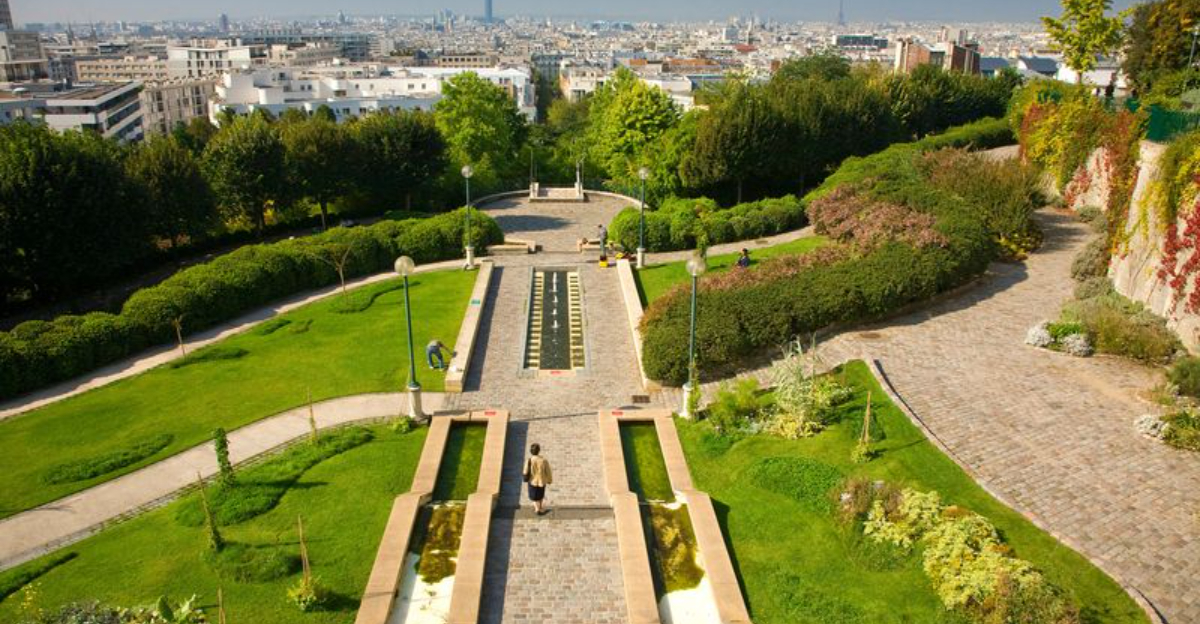
When you think of Paris, the Eiffel Tower and Louvre probably come to mind first. But beyond the landmarks lies a secret side of the City of Light, hidden gems and corners that few tourists ever discover.
From tranquil gardens tucked behind historic façades to enchanting neighborhoods steeped in history, these spots reveal a Paris that feels intimate, authentic, and utterly magical.
It’s time to step off the beaten path and experience the city’s best-kept secrets, places that deserve far more attention and visitors than they get. Ready to uncover the Paris only locals truly know?
1. La Campagne à Paris
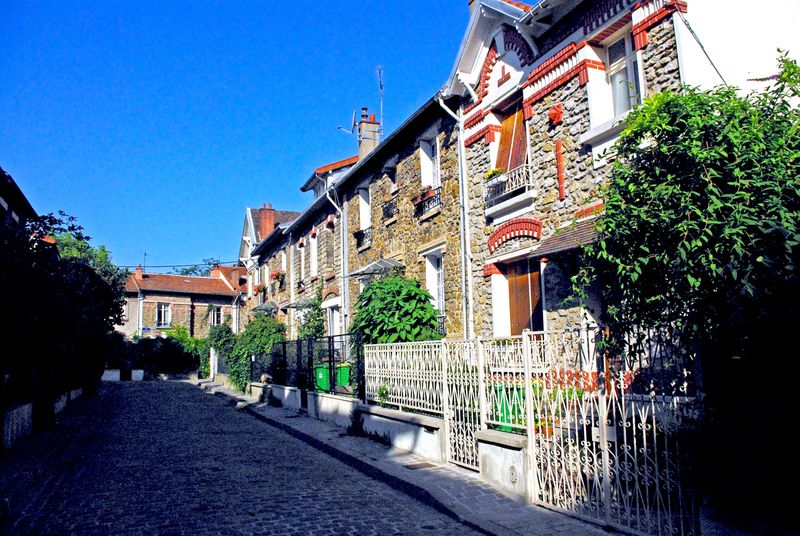
Cobblestone streets wind through this tiny hillside neighborhood that feels plucked from a fairytale. Houses adorned with climbing roses and pastel shutters create a village-like atmosphere that’s hard to believe exists in bustling Paris.
Built in the early 1900s as worker housing, this micro-neighborhood sits atop a small hill in the 20th arrondissement.
The contrast between this peaceful countryside vibe and the urban surroundings just steps away makes it feel like you’ve stumbled through a secret portal to rural France.
2. Rue Crémieux
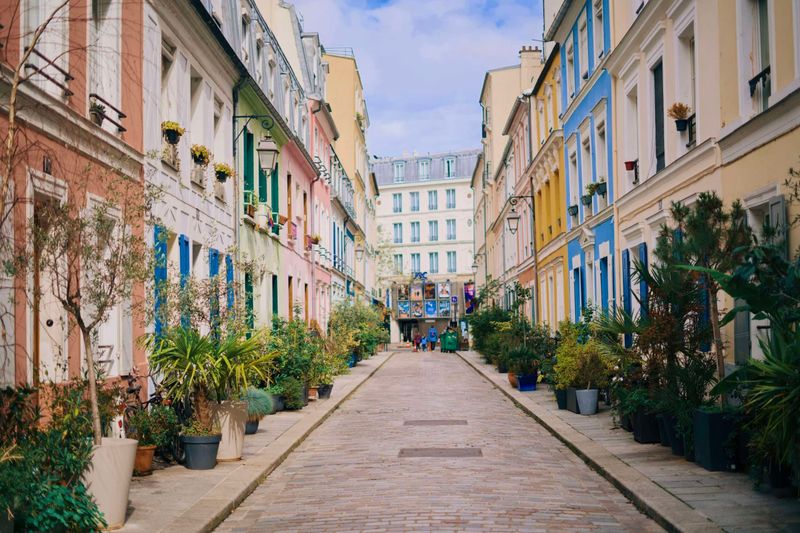
Rainbow-colored houses line this pedestrian-only lane, creating a photographer’s paradise that rivals London’s Notting Hill. Each façade boasts a different vibrant hue, lavender, sunshine yellow, robin’s egg blue, making it impossible not to smile while strolling through.
Potted plants and artistic doorways add to the whimsical charm. Though only about 500 feet long, this street packs more character into its short span than many entire neighborhoods.
The residents have fought to maintain its unique personality despite growing Instagram fame.
3. Parc des Buttes-Chaumont
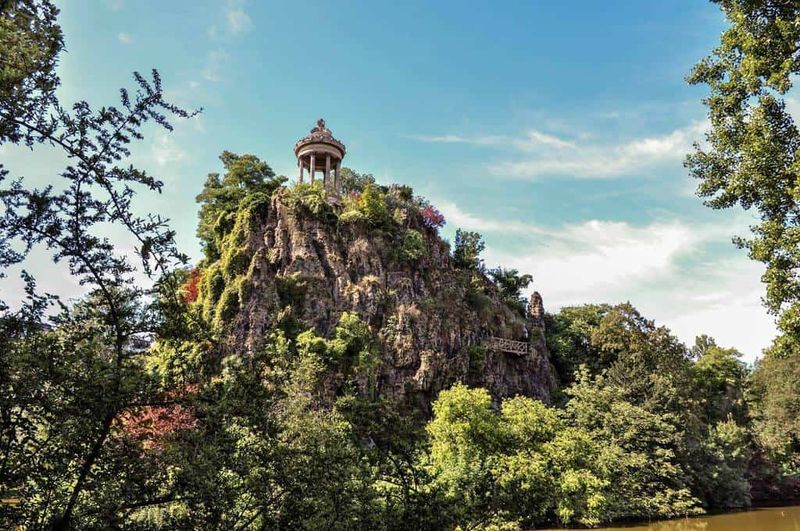
Dramatic cliffs rise from a glassy lake where a temple perches on a rocky island. Local joggers circle paths that wind through rolling hills, while friends picnic on grassy slopes that offer spectacular views of Montmartre in the distance.
Built on an abandoned quarry, this park’s wild terrain feels nothing like the manicured gardens tourists typically associate with Paris. Caves, waterfalls, and suspended bridges create an adventurous atmosphere. On summer evenings, young Parisians gather with wine and guitars as sunset paints the sky pink above this hidden paradise.
4. La Petite Ceinture
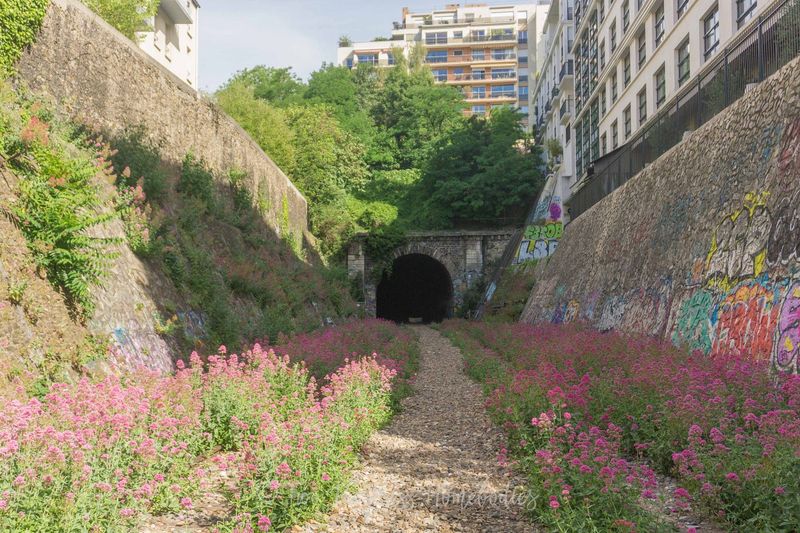
Have you ever wondered what happens when nature takes back a piece of forgotten history?
Wild flowers push through abandoned railway tracks on this defunct 19th-century line that once circled Paris. Nature has reclaimed the 32-kilometer loop, transforming industrial infrastructure into an accidental urban wilderness filled with street art and tranquility.
Access points scattered throughout the city lead to this green corridor where birdsong replaces traffic noise. Parts have been officially opened as parks, while others remain delightfully untamed. Walking these tracks feels like time-traveling through Paris’s industrial past while witnessing nature’s persistent return.
5. Square des Peupliers
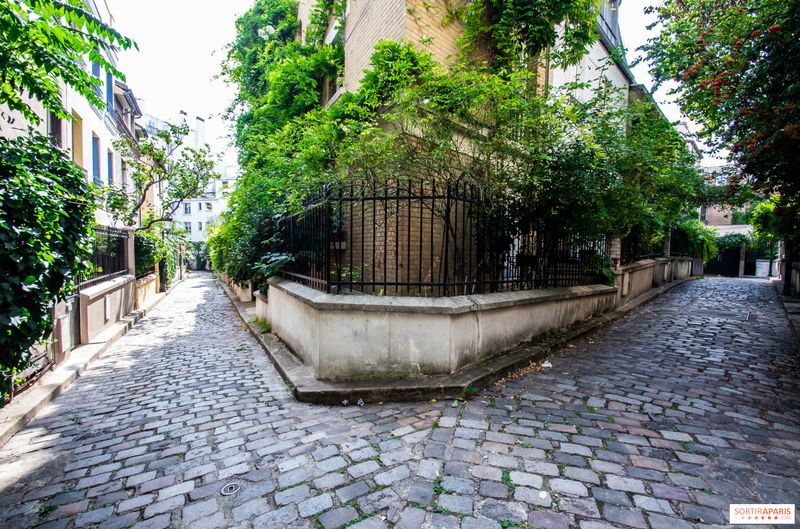
A circular lane lined with charming cottages creates a perfect geometric oasis in the 13th arrondissement. Poplar trees (peupliers) stand sentinel over this hidden roundabout where climbing roses cascade over garden gates and cats lounge in windowsills.
Time seems suspended in this micro-neighborhood designed in the 1920s. The perfectly preserved architecture feels more like a film set than real life.
Residents have maintained the village-like atmosphere with window boxes bursting with geraniums and blue wisteria draping over doorways.
6. Musée Zadkine

Stepping through the gate feels like discovering a secret garden where bronze figures emerge from lush greenery. This was once the home and studio of Russian sculptor Ossip Zadkine, preserved exactly as he left it when he died in 1967.
Sunlight filters through tall trees, illuminating powerful sculptures that seem to grow organically from the earth. Inside the modest house, intimate rooms display smaller works and personal effects.
The museum’s tranquil atmosphere offers a perfect respite from crowded tourist attractions, with visitors often finding themselves completely alone with extraordinary art.
7. Rue des Thermopyles
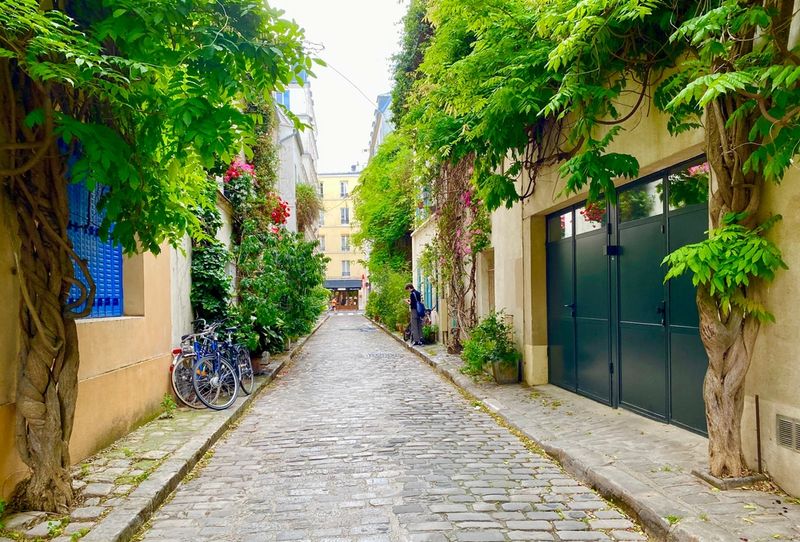
Cats doze on sun-warmed cobblestones while grapevines twist overhead on this narrow passage that feels more like countryside than capital city. Low-slung cottages with brightly painted doors line one side, their windows framed by climbing roses and wisteria.
Community gardens burst with vegetables and herbs, tended by local residents who gather for impromptu aperitifs on summer evenings.
The street’s name references the ancient Greek battle, though the only conflict here is deciding which angle makes the most Instagram-worthy photo. Artists frequently set up easels to capture this slice of village life hiding in plain sight.
8. Cité Florale

Streets named after flowers (Rue des Iris, Rue des Glycines) form this pocket-sized neighborhood where every available surface really blooms with color. Cottage-style houses painted in pastel hues hide behind flowering shrubs and climbing vines that leaf you feeling enchanted as they spill over garden walls.
Created in the 1920s as a garden city concept, this micro-district’s narrow lanes feel like stepping into a children’s storybook, it’s un-bee-lievably charming.
Despite being just minutes from busy boulevards, birdsong provides the perfect tune-up. Butterflies flutter between gardens that compete in an unofficial bloom-off for the title of best in show.
9. Jardin du Musée de la Vie Romantique

Rose bushes frame gravel paths leading to a mint-green house where artists and writers once gathered in 19th-century Paris. Hidden behind a wooden gate in South Pigalle, this secret garden transports visitors to a more genteel era.
The small museum celebrates the Romantic period, but the real magic happens in the courtyard garden. A tiny tea salon serves refreshments under rose-covered trellises in summer months.
The scent of flowers mingles with brewing tea as visitors sit at iron tables, momentarily forgetting they’re in one of Europe’s busiest capitals.
10. Passage Lhomme

Former artisan workshops line this quiet cobblestoned alley where potted plants create an impromptu urban garden. Wooden doors with peeling paint hint at the passage’s industrial past, while modern artists have now claimed many spaces as studios.
Vintage signs and original architectural details transport visitors back to 19th-century Paris. The passage narrows dramatically at points, creating perfect frames for photographs.
Residents hang laundry from upper windows and chat across balconies, creating a village atmosphere that feels worlds away from tourist Paris yet sits in the heart of the 11th arrondissement.
11. Villa Léandre

English-style cottages with whimsical details create an unexpected slice of London in Montmartre. A street sign humorously warns “No Swimming” at this decidedly landlocked address, showcasing the playful spirit of this 1920s development.
Art Deco touches adorn facades painted in soft pastels and warm earth tones. Tiny front gardens burst with roses and hydrangeas behind decorative iron gates.
Though just steps from the tourist crowds at Sacré-Cœur, this cul-de-sac remains peaceful and predominantly residential, with lucky Parisians calling these storybook homes their own.
12. Parc de Belleville
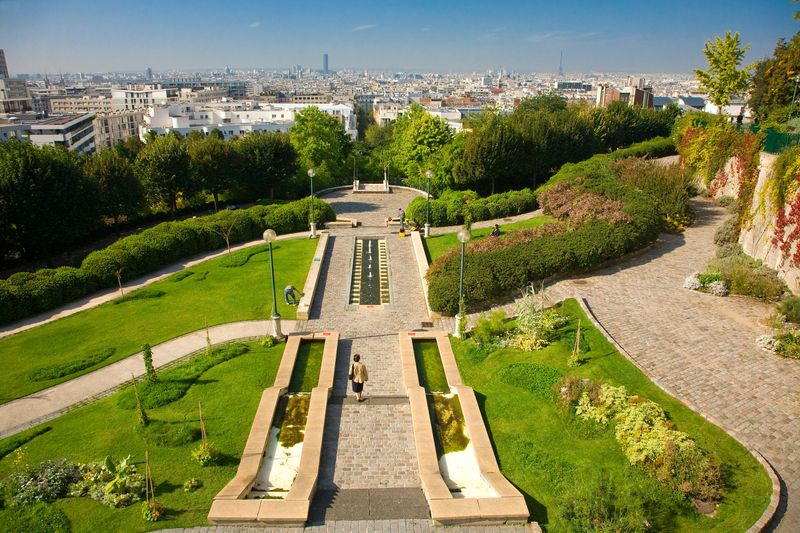
Terraced gardens cascade down a steep hillside where graffiti artists and grandmothers coexist in perfect harmony. Unlike manicured tourist parks, this local hangout embraces a wilder aesthetic with community gardens and street art integrating into the landscape.
The real treasure waits at the top, Paris’s highest viewpoint with panoramas stretching across the entire city. Local families spread picnics on grassy slopes while teenagers practice dance moves near the modern fountain.
During summer evenings, impromptu concerts and gatherings create a festival atmosphere as the setting sun turns the cityscape golden.
13. Les Arènes de Lutèce
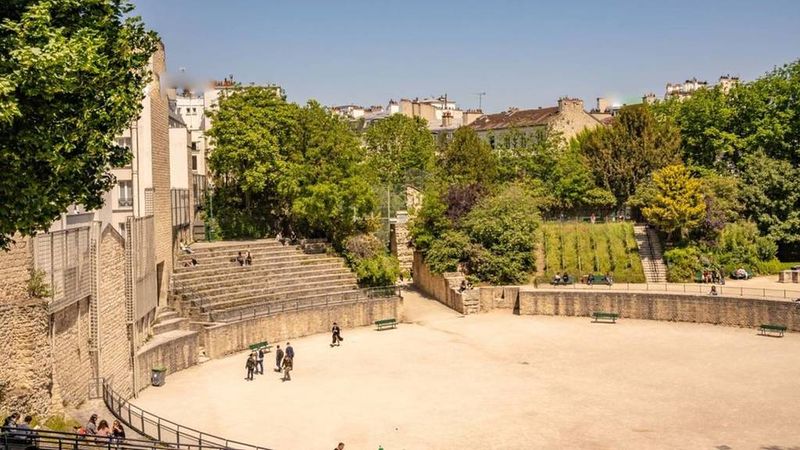
Ancient Rome meets modern Paris in this remarkably preserved amphitheater hidden between apartment buildings in the Latin Quarter. Built in the 1st century AD, these stone tiers once hosted gladiatorial combats for 15,000 spectators in Roman-era Lutetia.
Today, children kick soccer balls where gladiators once fought, and students read on stone seats that have witnessed nearly two millennia of history. The arena remained buried until the 1800s, when Victor Hugo campaigned for its preservation. The surrounding walls muffle city noise, creating a peaceful pocket where time seems to fold upon itself.
Even 2,000 years ago, people were doodling on the walls, archaeologists discovered ancient graffiti carved right into the stone seats!
14. Marché d’Aligre
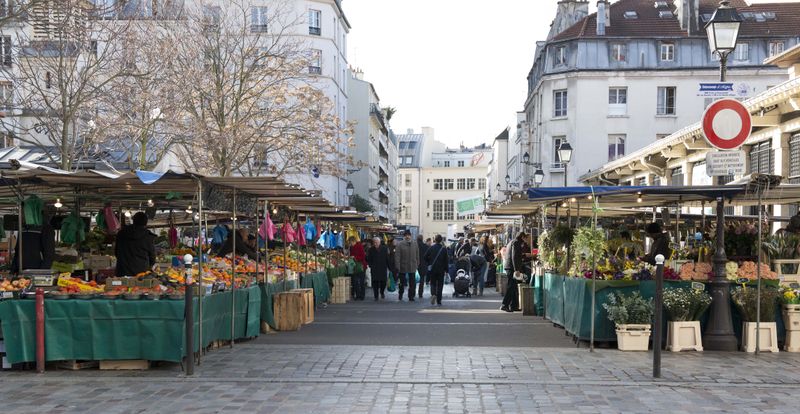
Vendors call out prices as shoppers squeeze between stalls overflowing with pyramids of seasonal produce, wheels of cheese, and flowers so fresh they still have morning dew. Unlike tourist markets, this daily bazaar primarily serves locals who greet stallholders by name.
The covered section houses butchers and fishmongers whose families have worked here for generations. Outside, the flea market section offers treasures from vintage copper pots to antique linens.
The market’s heart is Café Le Baron Rouge, where morning shoppers and vendors alike squeeze in for oysters and white wine, balancing precariously on wine barrels that serve as tables.
15. Le Passage Brady

Ever wondered where you can experience the colors and flavors of South Asia without leaving Paris?
Spices perfume the air in this glass-covered arcade nicknamed “Little India,” where restaurants, grocery stores, and fabric shops transport visitors to South Asia. Ornate iron and glass architecture from 1828 frames this multicultural passage in the 10th arrondissement.
Sari shops display rainbow fabrics alongside restaurants serving authentic regional cuisines from across the Indian subcontinent. The passage splits into covered and uncovered sections, creating a fascinating architectural contrast.
Bollywood music drifts from shop doorways while chefs prepare street food at tiny counters, creating a sensory experience that feels worlds away from typical Parisian scenes.
16. Rue Dénoyez

Every inch of wall space bursts with ever-changing street art on this kaleidoscopic lane in Belleville. Artists work in broad daylight, adding new layers to the vibrant palimpsest that has made this street an open-air gallery.
Unlike commercial street art districts, Rue Dénoyez maintains an authentic, rebellious spirit. Abandoned storefronts have been transformed into artist collectives and experimental galleries.
What other place lets you witness creativity unfolding in real time, right before your eyes? Locals gather at the street’s tiny bars where plastic chairs spill onto the sidewalk, creating impromptu meeting places. Here, artists and residents debate the latest political movements over inexpensive beer.
17. La REcyclerie

Chickens casually peck around garden beds sprouting atop an abandoned railway platform, while hip Parisians kick back sipping craft beer on upcycled furniture. This former train station has been given a second life as an urban farm, café, and workshop hub, all dedicated to sustainable living with a seriously cool vibe.
The building keeps its industrial edge, with original ticket windows cleverly transformed into quirky bar counters. Gardens flourish in old bathtubs, and a footbridge offers bird’s-eye views of the rusty tracks below.
You’ll find workshops here that teach everything from beekeeping to fixing up old furniture, proving that zero waste doesn’t have to mean zero fun. It’s a green oasis where community and creativity grow side by side.
18. Le Jardin du Palais-Royal

Fashion insiders retreat to this elegant garden surrounded by arcaded galleries where designer boutiques hide behind unmarked doors. Despite being steps from the Louvre, tourists rarely venture into this perfect rectangle of formal gardens, fountains, and tree-lined promenades.
Black and white striped columns by artist Daniel Buren create a contemporary counterpoint to the 17th-century palace architecture. Locals read on metal chairs positioned around the central fountain, the water’s gentle splash providing soundtrack to their literary escapes.
The surrounding arcades house not only exclusive shops but also centuries-old restaurants where literary giants once dined.
19. Musée de la Chasse et de la Nature
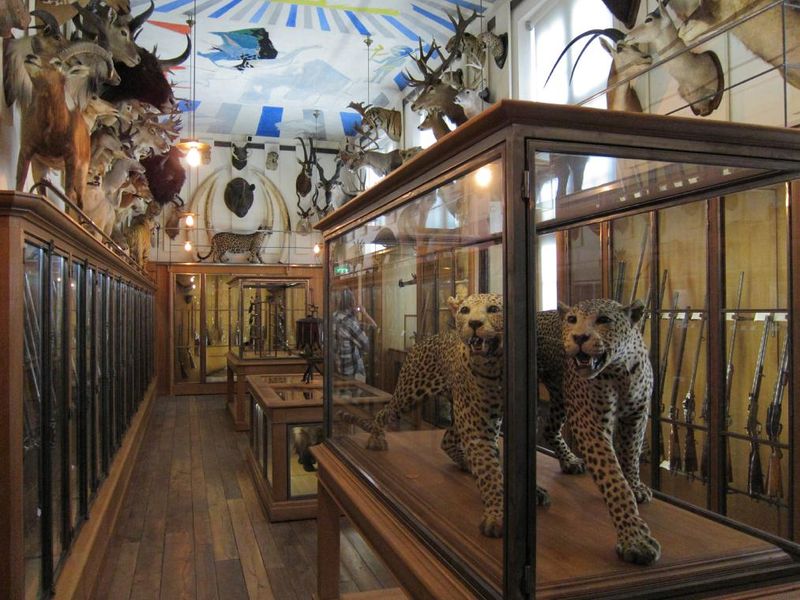
Taxidermied animals strike surreal poses throughout a 17th-century mansion, where contemporary art installations spark unexpected conversations with centuries-old hunting trophies. This isn’t your typical hunting museum, it’s a whimsical cabinet of curiosities that delves deep into humanity’s complex relationship with nature.
Inside, you’ll encounter meticulously preserved stag heads mounted alongside flickering video projections, antique firearms displayed next to interactive screens, and painted unicorns frolicking across ornate ceiling frescoes.
Discover drawers that, when pulled, release haunting bird calls, or buttons that bring wolf howls echoing through the elegant salons. Strange artifacts, mysterious sculptures, and playful installations transform the museum into a living tableau, part history, part dream, and entirely unforgettable.
20. Promenade Plantée / Coulée Verte René-Dumont

Thirty feet above street level, roses and cherry trees line a walking path built atop an abandoned railway viaduct. This elevated garden predates New York’s High Line by nearly 15 years, pioneering the concept of transforming industrial infrastructure into green space.
Have you ever wondered what the city looks like from a secret garden in the sky? The 3-mile path provides unique perspectives into apartment windows and hidden courtyards normally invisible to pedestrians. Arched brick viaducts below now house artisan workshops and design boutiques. The promenade alternates between wild sections resembling natural woodland and more formal garden designs with pergolas draped in wisteria and climbing roses.
21. Square Georges Cain
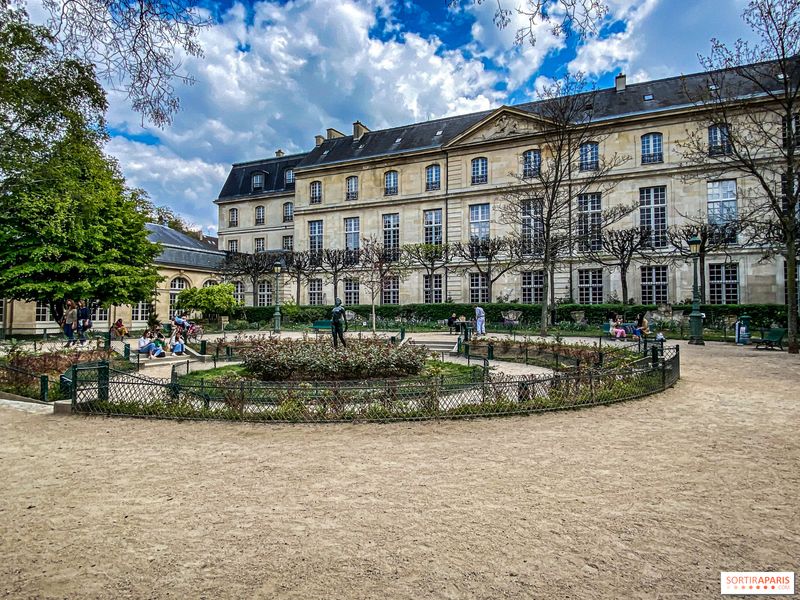
Roman ruins and medieval artifacts come alive in this hidden garden tucked just behind the Carnavalet Museum, transforming the space into an open-air museum steeped in history. Scattered stone fragments, remnants of buildings lost to Haussmann’s sweeping renovations, form a hauntingly beautiful sculpture garden beneath the shade of towering chestnut trees.
Named after a painter who captured the fading face of old Paris, this square is a living time capsule, preserving fragments of the city’s vanished past. Children clamber over ancient stone lions as if stepping into a fairy tale, while elderly locals sit peacefully reading newspapers beside Renaissance archways.
The garden’s walls themselves are a mosaic of medieval architecture, weaving together centuries of Parisian history into one serene, secret refuge.
